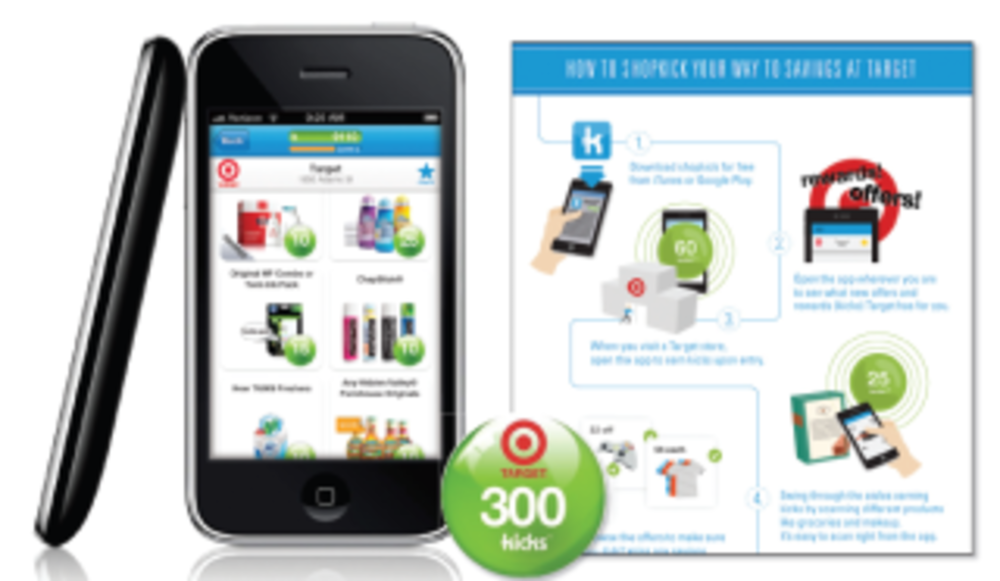Are print circulars and Sunday newspaper free-standing inserts (FSIs) at risk? The ubiquity of smartphones and an increasingly deal-conscious consumer has led marketers associated with supermarkets and consumer packaged goods (CPG) companies to find new and creative ways to incorporate digital coupons into their overall marketing mix. The upside to digital couponing is that they can be highly targeted, can be delivered to mobile devices while customers are in-store to entice them to buy more, and can enhance customer loyalty.
Yet, like all online endeavors, maximizing the value of digital couponing requires more sophisticated infrastructure and data sharing than many stores currently have. Still, in an industry dominated by Sunday newspaper inserts and in-store print circulars, grocery retailers such as SUPERVALU, Target, and Publix are turning to location-based mobile campaigns and innovative smartphone apps to drive the use of digital coupons.
In fact, digital coupons grew overall, with 11% more print-at-home and paperless offers last year, according to NCH Marketing Services. And, high growth rates are likely to continue as digital coupons evolve from downloadable print-at-home offers to coupons that can be scanned on a smartphone.
One of the biggest benefits marketers see with digital couponing is more precise targeting capabilities, which allow supermarkets to zero in on their most lucrative demographic: young families, says Teresa Chipps, independent business VP of marketing and education at retail giant SUPERVALU. “If you can attract a young family and be able to have them spend their money in your store, that’s obviously a lifetime of sales that you’re looking at,” she explains. SUPERVALU recently made the free smartphone app Yowza!! available to more than 1,900 of its independent stores to deliver coupons to in-store shoppers, enticing them to download the app with the promise of savings. To do this, the app geolocates users and delivers digital coupons within a certain mile radius. Additionally, shoppers can input their location to view available coupons nearby.
By reaching out to customers while they’re browsing grocery store shelves rather than sitting at the kitchen table, Chipps says, the company’s independent retailers are better able to target on-the-go, time-strapped young mothers—a key demographic, especially given that one in four moms use smartphones to find coupons for local stores, according to the Interactive Advertising Bureau (IAB) and Meredith’s Parents Network’s “Moms Go Back-to-School with Mobile” study.
Coupons delivered around the time customers decide to purchase also gives SUPERVALU a more comprehensive view of its customer base, as it can collect “real-time knowledge about how customers are shopping and how they’re spending their money,” Chipps says. Integrating POS data with information gathered from the Yowza app, for instance, enables a retailer to pinpoint how quickly a shopper redeemed a particular offer. Although such digital coupon initiatives are still nascent, the data being collected through them will eventually help retailers see how and where customers spend time and money, which will create greater insight into shopping behavior, Chipps notes.
But marketers also use digital coupons to generate in-store foot traffic. At least, that’s the thinking behind Target’s Shopkick app campaign, which launched in May. The free smartphone app gives Target shoppers the ability to receive points by scanning items such as food and toys. These points can be redeemed for gift cards, gift certificates, and in-store deals, including coupons and discounts—in other words, enticing customers to purchase more in the present in order to buy more from Target in the future.
“Target believes our digital platforms—mobile, online, and social—drive additional traffic to our stores, influence sales, and help create guest loyalty,” says company spokesperson Eddie Baeb. Most recently, Target launched a new-baby campaign in which shoppers who sign up can receive texts with mobile coupons and information about baby-related product launches.
Despite the increasing popularity of digital coupons, there’s a catch: To take full advantage of digital coupons, stores need to have an end-to-end data sharing strategy that incorporates multiple systems. While SUPER VALU has integrated its app, not everyone is at that stage. There are numerous factors marketers have to consider that go beyond a simple app: bandwidth, network connectivity, POS hardware, and scanners are all components that need to work in harmony. A malfunction in one area can undermine the entire program.
However without this integration, digital coupon programs gather little information other than a subscriber’s name and Zip code. Maria Brous, director of media and community relations at supermarket chain Publix, says retailers need a loyalty program tied to a digital coupon initiative to offer real insights into shoppers’ buying history and behavior.
Publix began testing a new digital coupon system in August, piloting the program in certain areas in Florida and Alabama. The free service lets shoppers select coupons from Publix’s website via a computer, smartphone, or tablet and save them to an account. Shoppers can then redeem these paperless coupons at checkout by entering their phone number. Although Publix is optimistic that the digital coupons program will “enhance the customer shopping experience,” Brous says, it has no intention of decreasing its paper-based deals.
Retailers are nowhere near ready to phase out print circulars. And this is a good thing for customers, many of whom continue to prefer print coupons over their digital counterparts. Marketers still need to provide consumers with choices, rather than simply adopt the hot technology of the moment.
“We’re always looking to engage with our customers on the platforms and by the means in which they desire to engage with us; digital couponing is one example,” Brous says. “But there will be customers who prefer paper coupons or circulars. Our goal is to offer our customers the choice.”







